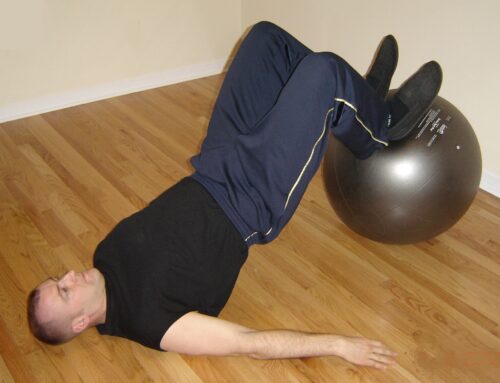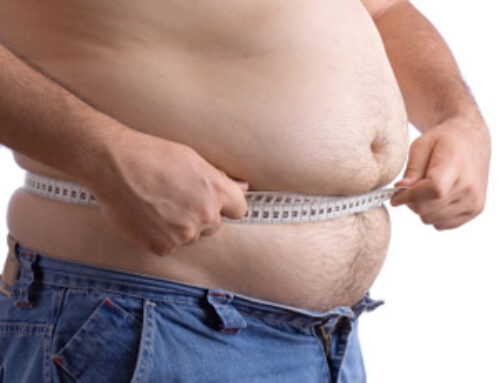If you have a strong background in health and fitness, or if you’ve ever worked with a personal trainer, I’m certain you’ve heard over and over that it’s impossible to “spot reduce” body fat. Heck, I’ve been telling my clients that for years as well… “you can’t reduce body fat in a specific area of your body by exercising that specific area… fat is metabolized off the entire body.”
For the most part, I still believe that to be true, because it has been my experience and most of the research backs it up. However, I have been reading about and hearing more from other experts about research that suggests we may be able to better target our fat loss efforts using certain methods.
There are medical methods of spot reduction including surgical liposuction (suck out the fat with a steel suction pipe), laser-lipo (using lasers to heat and shrink fat cells), cryolipolysis (freezing fat cells to death), and mesotherapy (injecting certain compounds to destroy local fat stores). But we’re talking about using nutrition, exercise, and topical substances to fine-tune fat loss. Am I skeptical? You bet! But it’s my job to be a “Learn it All” rather than a “Know it All”, so I’m not going to discredit this potentially powerful information without checking it out thoroughly. Besides, in my experience, it’s usually a good idea to challenge the mainstream beliefs. Let’s take a look at what the heck I’m talking about.
Exercise Does Affect Your Hormones… But Does That Affect Specific Fat Sites?
One well recognized method that could be viewed as “spot reduction” has been popularized by renowned strength coach, Charles Poliquin. The theory is that the areas on your body where you tend to store more fat are related to specific hormone imbalances. Therefore, by manipulating your diet, exercise program, or supplement regimen, you can influence these hormones in your favor and effectively “spot” reduce that part of your body that was being affected. Poliquin calls this Biosignature Modulation, although other professionals have similar programs by other names. Find out more about this at the link below:
=> Use Nutrition and Exercise to Control Your Hormones!
Another popular method many people have used in an attempt to target tough-to-lose fat zones on their bodies, is the application of specialized topical creams and gels. The theory is that the ingredients used in these topical lypolytic formulas (including Yohmibe, Caffeine, Theophylline, Aminophylline) would be absorbed into the area where you rubbed them and facilitate the shrinkage of fat cells locally. Although most experts dismiss this as false marketing and wishful thinking, there are still many who claim to have achieved true measurable results.
Check out these blog posts written by two well respected experts, Dr.Clay and Timothy Ferriss:
Still other studies have suggested that by performing high repetition exercise for a specific area of the body can lead to shrinkage of fat cells in that area by increasing heat and blood flow to that area. Interestingly enough, there seems to be some research evidence to demonstrate this, although I’ve never experienced it first hand… yet! I’m skeptical, but curious. Learn more about this effect by following these rather convincing links below:
=> New Research on Targeting Body Fat
=> The Sauna Belt and Ab Training Can Make Your Waist Smaller?
Do any of these spot reduction techniques hold weight? I don’t believe so… but then again, I don’t know “for sure”. At this point I would not recommend any of these methods to a client but I encourage you to do your own research.
Until then, there are already proven fat loss solutions that you can depend on, including HIIT, MRT, intelligent nutrition, and adequate rest. Now I want to know what YOU think about all this. Is there really such a thing as Spot Reduction, or is it just a myth? Is any real evidence of it or are there just money-grabbing scams? Do you have any personal experience with it? What’s your opinion? Please leave a comment below… I look forward to hearing from you, starting a discussion, and sharing some ideas!









Hi Josh,
I took the biosignature modulation coure when it came to Toronto a few months back and I have to say it does definately work. There are 12 sites total and each one has a component linked to it, whether it be hormonal or nutritional. Feel free to email me and I will be more then happy to share some details of the course with you.
Zain
it can! I was watching a siaepcl on this on the discovery channel a few years ago and i was thinking wow, i can suck the fat out of my hips and make boobs! one little problem though, the fat in your body knows where it is supposed to be, so it migrates back causing a very disgusting looking lumpy trail. I don’t know if there ha been any improvements on this since i watched the show like i said a few years ago but how great would that be?
Because you are a female, any wehgit you lose is most likely to be from your hips and thighs, but if you lose enough body wehgit overall you might get lucky. However, the danger there is that you continue to lose wehgit and it may never happen. It’s pretty hit and miss and simply relies on your bodies own natural order for depositing and burning fat reserves. Although, there are things you can do that will help you out. Lower and upper back exercises help improve posture while shoulder and chest exercise will improve strength. This will give the appearance of lifted breasts and also the strength to not let them bother you or get in the way so much.References :
My doctor reeltncy put me on a low carb diabetic diet. I am not a diabetic yet. I have a very high insulin resistance in which he wants to treat with diet and exercise and diabetic meds. I have been charting everything I eat, the calories, the fat grams, the carbs, fiber and protein. However, since my carbs have decreased, it seems that my fat intake has increased at least it seems that way in the pie chart. Is it possible to reduce the fat AND carbs? The doc wants me under 35 carbs a day which is extremely hard to do as it is. It seems like the lower fat foods have a higher carb content and the higher fat foods have a lower carb content. I am concerned about my blood lipids, blood pressure and overall heart health. I would greatly appreciate any tips or advice you may have to offer.Thanks!Oh, the reason I am so insulin resistant is due to the PCOS that I was diagnosed with a year ago. It’s sypmtoms have started to take over my body very quickly and has deemed me infertile, unless I can drop and control my insulin levels ASAP.
Hey Alfhyn, when you reduce your carbs, increase your healthy fats and protein… fat is NOT bad for you, and is a great source of healthy energy once your carbs are low.
My dear daughter — You are not dacnnig 4-5 hours per day any more! The body burns carbs first before it can get to stored fat. When you were that active, you were constantly burning off your intake and never adding to the fat storage. Plus there was more nervous energy and your metabolism does run faster at a younger age…Running after kids is exercise, but not the intensity of holding poses and the movement of dance.
[…] => Is Spot Reduction actually possible? […]